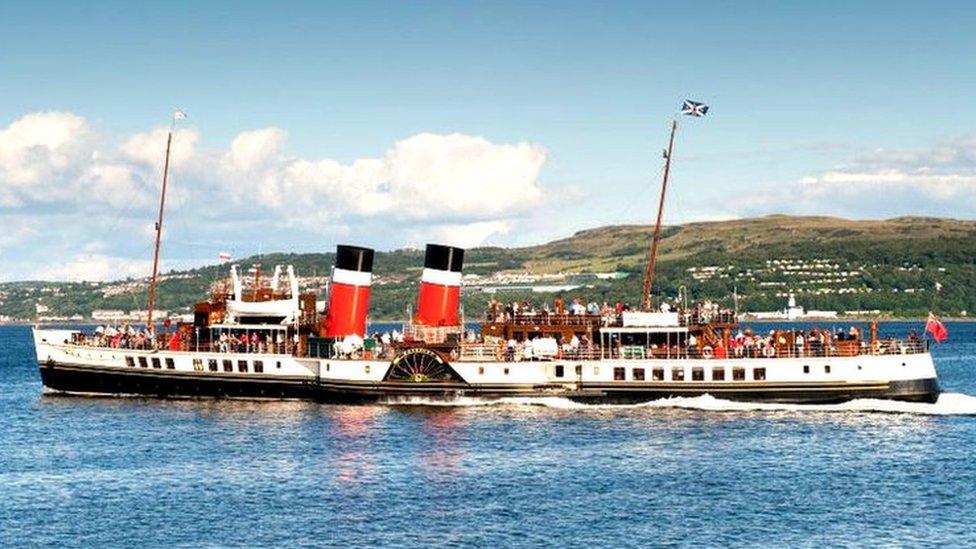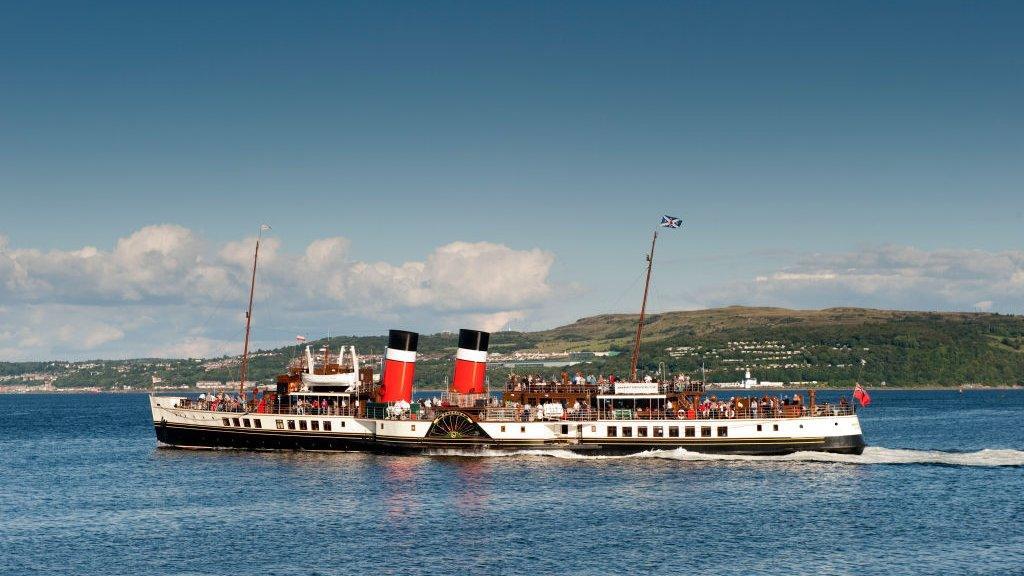Waverley paddle steamer 'will not sail in 2019'
- Published

The 73-year-old ship has been undergoing repair work since February
The Waverley paddle steamer has been withdrawn from service for the first time in 45 years due to mechanical problems.
Work on the 73-year-old ship's boilers has been ongoing since February.
It was hoped repairs could be carried out in time for the launch of its summer sailings from the River Clyde in Glasgow.
But now the operators have announced that the boilers must be replaced if the ship is to sail again in 2020.
Waverley Excursions general manager Paul Semple said: "The whole Waverley team is deeply disappointed that we are unable to repair the ship's boilers and operate this season despite every effort being made to overcome the challenges presented.
"I know first-hand the fondness that the general public have for Waverley and I know this news will be disappointing for the tens of thousands of passengers who would have sailed with us this year around the UK."
Significant cost
The charity which owns the Waverley is to launch an appeal to raise the "significant" funds needed to pay for the repairs.
Mr Semple added: "More than ever, we need support to preserve this iconic vessel."
The Waverley was built in 1946 and is the last sea-going paddle steamer in the world.
It carries thousands of passengers on pleasure cruises along the Firth of Clyde every year and is a popular attraction at ports around the UK.
The ship has been temporarily out of service several times in recent years.
It spent two weeks in dock for repairs after colliding with a pier in August 2017.
A year later, hundreds of passengers were stuck on board after it broke down between Greenock and Helensburgh.


The Waverley - facts and figures
Built by A. & J. Inglis of Glasgow and launched in October 1946.
Entered service with the London and North Eastern Railway in June 1947, working LNER's Firth of Clyde steamer route from Craigendoran Pier, near Helensburgh, to Arrochar.
Powered by a three-crank diagonal triple-expansion marine steam engine built by Rankin & Blackmore in Greenock.
Now painted in original LNER 1947 livery of red, white and black funnels, traditional brown-grained (or "scumbled") superstructure and black paddle-wheel boxes.
July 1977 - badly damaged when she struck rocks near Dunoon. The heavier than normal post-war construction which made provision for possible future military use as a minesweeper may have helped her stay together while she was refloated.
June 2009 - struck the breakwater at Dunoon with 700 passengers on board, 12 of whom suffered minor injuries.
August 2017 - Out of service for two weeks after colliding with a pier on the Clyde.
August 2018 - Hundreds of passengers stuck on board after it breaks down between Greenock and Helensburgh.
Since being sold to the Paddle Steamer Preservation Society, she has carried more than five million passengers.
- Published25 August 2018
